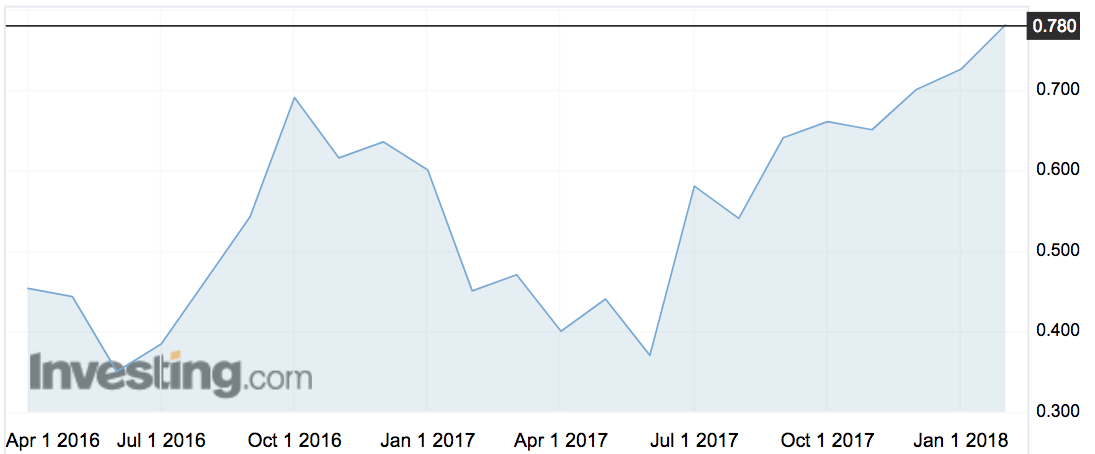How Volpara is using machine learning to improve breast cancer screening

Pic: REB Images / Tetra images via Getty Images
Artificial intelligence is not the same as machine learning — and it’s the latter which is making inroads into the medical sector, says Volpara Health Technologies founder Sir Mike Brady.
Sir Brady — knighted in the 2004 New Years Honours list for services to engineering — says a combination of factors means companies like Volpara are increasingly putting machine learning to use in the medical sector.
Volpara (ASX:VHT) uses machine learning to analyse breast screening data from around the world to improve the process.
“There have been some really significant enhancements of the mathematics of machine learning over the last 20 years, computers have increased in power by an order of magnitude, and in the cloud we have created databases much more easily than we could have 20 yrs ago,” Sir Brady told Stockhead.
That combination of factors is driving the adoption of machine learning in medicine, he says.
“It’s been the judicious interplay between machine learning and the clinical application where the real success has been, and going forward will be.”
Investors seem to agree.
Volpara shares are at an all-time high, roughly doubling in value since mid last year.
A steep sell-0ff in the previous six months was due to investors with escrowed shares selling out, Sir Brady says.
Another round of shares is coming out of escrow in April this year — those owned by board members — but Sir Brady says the directors are in for the long haul.
“I’ll sell down my shares when they get to $20. I’m in for the long ride.”

A big data story
Sir Brady, a professor at Oxford, founded Volpara in 2009 with his university colleague Ralph Highnam.
Mr Highnam fell in love with a Kiwi doctor named Sue and moved to Wellington. Hence New Zealand, rather than the UK, became the HQ for a breast density measurement software business.
Breast density is a key risk for breast cancer but not yet commonly measured during mammograms.
Volpara’s software measures data from individual breast screens, while an enterprise version collates data gathered in each screening centre in the Cloud.
In the past year the enterprise software gathered mammogram data from 1.2 million women in the US — a number expected to reach 3 million next year.
The extra data is turning Volpara into a new business — a big data company.
It can now provide medical staff with guidance, for example if they are positioning the breast correctly in the screening machine, compressing it too little or too much or if the X-Ray dose is correct.
“Although we started out by doing this quantitative measure of density, the enterprise product provides this much more general information to a breast imaging centre about the performance of [the staff] in order to give the woman a much more effective service,” Sir Brady said.
Keeping promises
Morgans analyst Scott Power says Volpara is on track to break even in 2019.
“They said 12 months ago they expected to increase annual recurring revenue [a common software-as-a-service, or SaaS] financial metric by 200 per cent, from $1 million to $3 million. They haven’t quite finished their financial year but they are well and truly on track to exceed that,” Mr Power told Stockhead.
Their main rival is Nasdaq-listed Hologic — but Mr Power says Hologic’s software is not well liked in the market and many have swapped to Volpara.
- Bookmark this link for small cap breaking news
- Discuss small cap news in our Facebook group
- Follow us on Facebook or Twitter
- Subscribe to our daily newsletter
Volpara may be a takeover target down the track but not for traditional medical companies, because of the huge amounts of data they’re accumulating.
“Some of the big companies like IBM or Google would be interested in companies like Volpara that have developed these large bases of data,” he said.
Bound for the land of opportunity
Volpara is heavily focused on the US market where 40 million women received mammograms a year — roughly equal to the number of women receiving them in the rest of the world.
CFO Craig Hadfield told Stockhead about 90 per cent of revenue already comes from the US, or $NZ1.6 million ($1.5 million) by the end of January. About $NZ300,000 came from Australia and Japan and a small amount from Europe.
Europe is still small because of their national health systems.
“If you win a contract there it’s millions of women and extremely profitable in one day, but that can take 10 years so for us that’s a long term play.”
“It’s not where Volpara will be made in the next three years.”
He says higher admin and corporate costs in the last quarter came from an increase in audit fees, mainly due to complexities around revenue recognition, and insurance costs thanks to the cloud.
“Lots of customers in the US are adopting cloud quickly, but a lot are still coming to terms with who is responsible and a lot are trying to offload as much liability to third party suppliers like us. So we have had to bump up insurance costs to cover SU customers in particular.”
Volpara closed up slightly at 78c.
UNLOCK INSIGHTS
Discover the untold stories of emerging ASX stocks.
Daily news and expert analysis, it's free to subscribe.
By proceeding, you confirm you understand that we handle personal information in accordance with our Privacy Policy.








